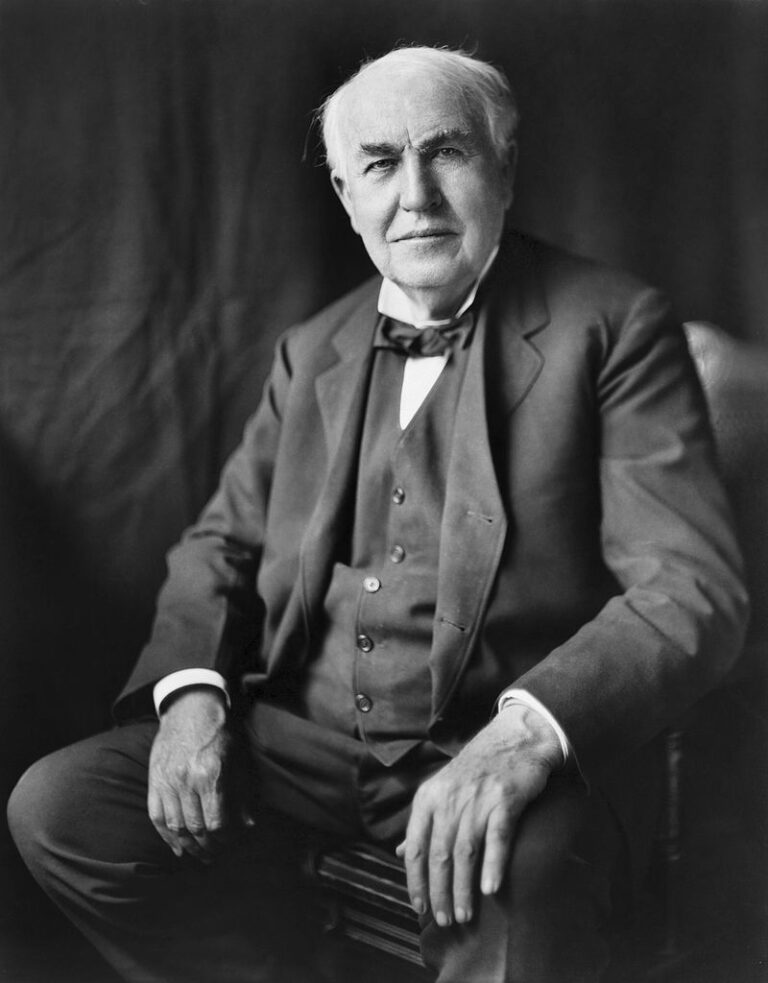Progress, Not Perfection: Prioritizing Growth, Consistency, and Progress in Leadership Development
The Flaw in Perfection: Prioritizing Growth, Consistency, and Progress Instead
Leadership development is an ongoing process that requires a commitment to growth, consistency, and progress. It is a journey that begins with a strong foundation and continues throughout one’s career. Many leaders make the mistake of thinking that perfection is the goal, and they focus all of their efforts on achieving this unattainable ideal. However, the truth is that perfection is impossible, and the pursuit of it can be counterproductive.
Instead, leaders should prioritize growth over perfection. Growth is the process of continually learning, improving, and evolving. It requires a mindset shift from fixed thinking to growth thinking. When leaders adopt a growth mindset, they see challenges and setbacks as opportunities for learning and development, rather than failures.
Leaders who prioritize growth are more resilient, creative, and adaptable. They are better equipped to navigate change and uncertainty, and they inspire their teams to do the same. They are not afraid to take risks, make mistakes, and learn from their failures. By focusing on growth, leaders create a culture of continuous improvement, where everyone is encouraged to learn and develop.
One of the most significant benefits of prioritizing growth over perfection is that it allows leaders to focus on what is most important – progress. Progress is the act of moving forward, making meaningful change, and creating value. Progress requires action and results, not just a perfect plan or idea.
The pursuit of progress requires leaders to be proactive, take calculated risks, and be open to feedback and ideas from their team. Leaders who prioritize progress are not satisfied with the status quo and are always looking for ways to improve. They embrace innovation and change, and they are not afraid to challenge the norms.
In contrast, the pursuit of perfection can lead to stagnation and complacency. Leaders who focus on perfection may become overly cautious and risk-averse, avoiding change and innovation for fear of failure. This mindset can create a culture of fear and micromanagement, where creativity and experimentation are discouraged.
The pursuit of growth, consistency, and progress over perfection is essential for leadership development. Leaders who prioritize growth are more resilient, creative, and adaptable. Consistency builds trust, credibility, and reliability, while progress leads to meaningful change and innovation. By adopting a growth mindset and committing to continuous improvement, leaders can create a culture of excellence that inspires their teams to achieve their best.
Growth > Perfection
In today’s fast-paced and ever-changing business environment, leaders who prioritize growth over perfection are more likely to succeed. Growth is a continuous process of learning and improvement that helps leaders stay ahead of the curve and adapt to new challenges.
One of the key advantages of a growth mindset is resilience. Leaders who focus on growth are better able to handle setbacks and challenges. They see setbacks as opportunities to learn and grow, rather than as failures. This mindset allows them to bounce back from setbacks quickly and get back on track.
Another advantage of a growth mindset is creativity. When leaders are focused on growth, they are more open to new ideas and approaches. They are not afraid to experiment and try new things, even if they may not work out initially. This mindset can lead to innovation and breakthroughs that can give the organization a competitive advantage.
Adopting a growth mindset also helps leaders develop a sense of purpose and meaning in their work. When leaders are focused on growth, they are not just working to achieve a particular goal or outcome. They are on a journey of continual self-improvement and development, which can be very rewarding and fulfilling.
Leaders who prioritize growth over perfection also tend to be more adaptable. They are not attached to a particular way of doing things or a particular outcome. Instead, they are open to change and willing to adapt their approach as circumstances change. This mindset can be especially valuable in times of uncertainty and change, where the ability to adapt quickly can be critical to the success of the organization.
Finally, leaders who prioritize growth over perfection create a culture of continuous improvement. When leaders model a growth mindset, they inspire their team members to do the same. This creates a culture of learning and development, where everyone is encouraged to seek out new challenges and opportunities for growth.
Growth is a critical component of leadership development. By prioritizing growth over perfection, leaders can develop resilience, creativity, adaptability, a sense of purpose, and a culture of continuous improvement. Rather than striving for an unattainable ideal of perfection, leaders should focus on the journey of growth and development.
Consistency > Perfection
While the pursuit of perfection may seem admirable, it is often unrealistic and can lead to negative outcomes. Instead, leaders should prioritize consistency over perfection. Consistency is the ability to deliver reliable and predictable results, which builds trust and credibility among team members, customers, and stakeholders.
Leaders who prioritize consistency understand that mistakes and failures are inevitable. Instead of striving for perfection, they focus on creating systems and processes that are designed to deliver consistent results. This mindset allows them to identify and correct errors quickly and minimize the impact of mistakes.
Consistency is essential for building trust and credibility. When leaders consistently deliver high-quality work, team members and customers can trust that they will continue to do so in the future. This trust is critical for building strong relationships and partnerships that can help drive the organization’s success.
Consistency is also essential for building reliability. When leaders consistently deliver on their promises, team members and stakeholders can rely on them to follow through on commitments. This reliability is critical for building a strong reputation and can help the organization attract new customers and opportunities.
In addition to building trust, credibility, and reliability, prioritizing consistency can also help leaders foster a culture of excellence. When leaders model consistent behavior, they set the standard for the entire organization. This can inspire team members to strive for consistency in their own work and create a culture of accountability and high performance.
Finally, prioritizing consistency over perfection can help leaders avoid the negative consequences of perfectionism. Perfectionism can lead to unrealistic expectations, micromanagement, and burnout. When leaders prioritize consistency, they focus on delivering reliable and predictable results, rather than obsessing over small details or trying to achieve an unattainable ideal.
Prioritizing consistency over perfection is critical for leadership success. Consistency builds trust, credibility, and reliability and can help leaders foster a culture of excellence. By focusing on consistent results, rather than perfection, leaders can avoid the negative consequences of perfectionism and create an environment where team members can thrive.
Progress > Perfection
In today’s dynamic and competitive business landscape, leaders who prioritize progress over perfection are better positioned to succeed. Progress is the act of moving forward and making meaningful change, rather than striving for an unattainable ideal of perfection.
One of the key advantages of prioritizing progress is that it requires action and results, rather than just planning and ideation. Leaders who prioritize progress are not afraid to take calculated risks and make bold moves. They understand that progress often requires experimentation and innovation, and they are willing to invest the time and resources necessary to achieve meaningful change.
Another advantage of prioritizing progress over perfection is that it allows leaders to remain focused on their long-term goals and vision. When leaders are focused on progress, they are not distracted by minor details or minor setbacks. Instead, they are focused on the bigger picture and on achieving their long-term objectives.
Progress is also essential for creating value. When leaders prioritize progress, they are focused on creating new opportunities and solving problems. This can lead to the development of new products, services, or business models that can create significant value for customers and stakeholders.
In addition, prioritizing progress over perfection can help leaders foster a culture of innovation and growth. Leaders who model progress inspire their team members to do the same, creating a culture of experimentation and continuous improvement. This can lead to breakthroughs and innovations that can help the organization stay ahead of the competition and achieve long-term success.
Finally, prioritizing progress over perfection can help leaders avoid the negative consequences of perfectionism. Leaders who focus on progress are not paralyzed by the fear of failure or the need to get everything perfect before moving forward. Instead, they understand that progress often requires trial and error and are not afraid to pivot and make changes along the way.
In conclusion, prioritizing progress over perfection is critical for leadership success in today’s dynamic and competitive business landscape. Leaders who focus on progress are willing to take calculated risks, remain focused on their long-term objectives, create value, foster a culture of innovation, and avoid the negative consequences of perfectionism. By embracing progress, leaders can create an environment where their team members can thrive and achieve their full potential.
Do the Work
While prioritizing growth, consistency, and progress over perfection is critical for leadership development, it requires a commitment to action and effort. Leaders must be willing to put in the work to achieve their goals and drive meaningful change within their organizations.
One of the first steps in adopting a growth mindset is to embrace a willingness to learn and be open to feedback. Leaders who are committed to growth must be willing to acknowledge their weaknesses and areas for improvement, seek out new learning opportunities, and actively engage in self-reflection.
Consistency requires a commitment to establishing routines and habits that support success. Leaders who prioritize consistency must be willing to develop systems and processes that promote reliability and predictability. They must also be willing to hold themselves accountable and create a culture of accountability within their organization.
Progress requires a willingness to take calculated risks and be proactive in driving change. Leaders who prioritize progress must be willing to experiment, try new approaches, and pivot when necessary. They must also be willing to invest the time and resources necessary to achieve meaningful change, even if it requires taking a long-term perspective.
Overcoming perfectionism and fear of failure is also critical for achieving growth, consistency, and progress. Leaders must understand that mistakes and setbacks are a natural part of the learning process and must be willing to embrace them as opportunities for growth and development. They must also be willing to delegate tasks and responsibilities to their team members, allowing them to take ownership and learn from their own experiences.
To achieve growth, consistency, and progress, leaders must also be willing to measure and track their progress. This requires a commitment to setting clear goals, monitoring performance, and adjusting course when necessary. Leaders must also be willing to celebrate successes and recognize team members who contribute to the organization’s growth and success.
Achieving growth, consistency, and progress over perfection requires a commitment to action and effort. Leaders must be willing to embrace a growth mindset, establish consistent routines and habits, take calculated risks, overcome perfectionism and fear of failure, and measure and track their progress. By doing the work, leaders can create a culture of excellence and drive meaningful change within their organizations.
Do the Work: Achieving Growth, Consistency, and Progress in Leadership Development
In today’s dynamic and competitive business environment, leaders must prioritize growth, consistency, and progress over perfection. By adopting a growth mindset, leaders can remain resilient, creative, adaptable, and motivated in the face of challenges and setbacks. Consistency is key to building trust, credibility, reliability, and accountability within the organization, while progress is essential for creating value, driving innovation, and achieving long-term success.
To achieve growth, consistency, and progress, leaders must be willing to put in the work. They must be open to learning, establish consistent routines and habits, take calculated risks, overcome perfectionism and fear of failure, and measure and track their progress. By doing so, they can inspire their team members to do the same, creating a culture of continuous improvement, experimentation, and innovation.
In conclusion, the pursuit of perfection can be counterproductive and unrealistic. Instead, leaders must prioritize growth, consistency, and progress, understanding that mistakes and setbacks are a natural part of the learning process. By focusing on growth, consistency, and progress, leaders can create a culture of excellence that drives meaningful change and value within their organizations. The key is to do the work, commit to the journey, and continuously strive for improvement.







